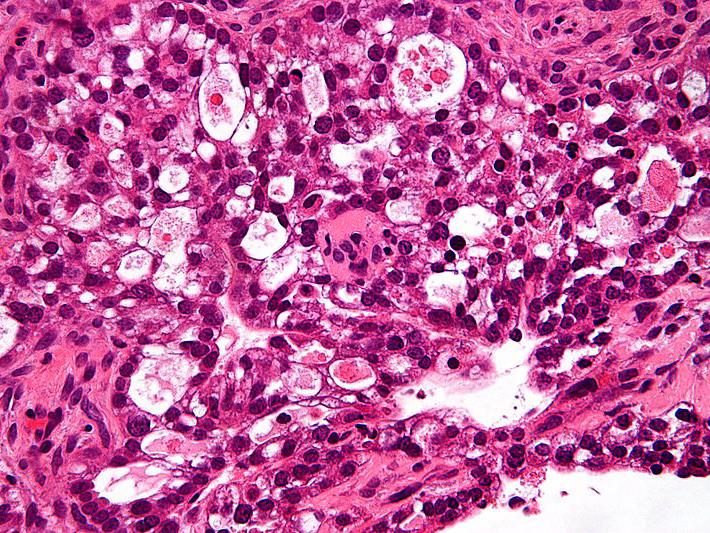The Independent's journalism is supported by our readers. When you purchase through links on our site, we may earn commission.
Artificial intelligence used to detect women with deadliest ovarian cancer
Technique picks out worst forms of disease that would not be recognised by conventional methods

The deadliest forms of ovarian cancer have been detected using AI, offering hope for more precise life-saving treatments.
Scientists have created a tool that seeks out clusters of tumour cells with unusually shaped nuclei – the control centres at the heart of each cell.
More than 7,000 new cases of ovarian cancer are diagnosed every year in the UK, and it has one of the worst survival rates of all cancers.
Normal survival rate beyond five years is 53 per cent, but this is cut to just 15 per cent for patients with these misshapen cells.
The oddly shaped nuclei appear to be an indication that the cell’s DNA has become unstable, but conventional tests can easily overlook them.
By picking out women with these unusual cells, the researchers behind the new AI hope to develop a system in which treatments are better tailored towards cancer patients.
“Using this new test gives us a way of detecting tumours with hidden weaknesses in their ability to repair DNA that wouldn’t be identified through genetic testing,” explained Dr Yinyin Yuan, who led the study at the Institute of Cancer Research.
“It could be used alongside gene testing to identify women who could benefit from alternative treatment options that target DNA repair defects, such as PARP inhibitors.”
In research published in Nature Communications, the researchers used their computer tool to test tissue samples from more than 500 women with ovarian cancer. In total the AI scanned nearly 150 million cells.
Besides choosing the best treatment, the research by Dr Yuan’s team also opened new potential immunotherapy avenues.
Immunotherapies consist of treatments that give the body’s own immune system a boost in its fight against cancer cells.
The scientists noticed immune cells that help to defend the body against disease were not able to enter the misshapen clusters.

A substance called galectin-3 was present at high levels in these clusters, and the scientists concluded it may be the key to this newly discovered “escape route” from the immune system.
Galectin-3 could therefore be a new target for therapies, as removing it could leave these deadly cells vulnerable to the body’s immune cells.
Join our commenting forum
Join thought-provoking conversations, follow other Independent readers and see their replies
Comments
Bookmark popover
Removed from bookmarks